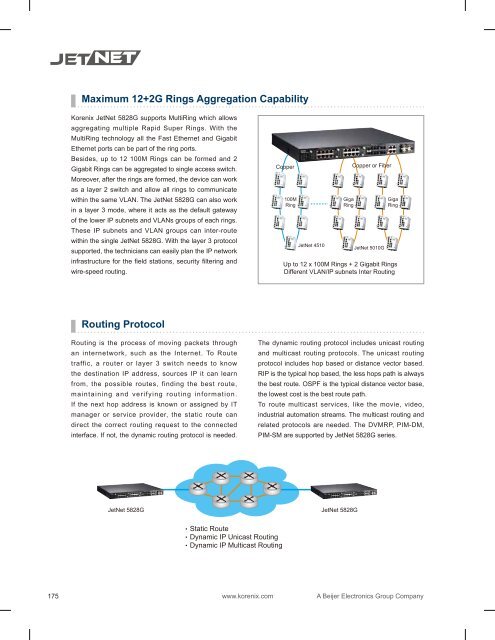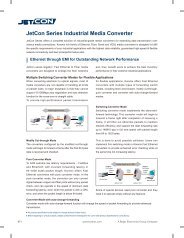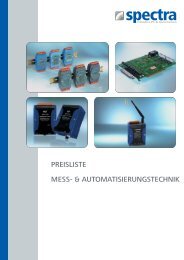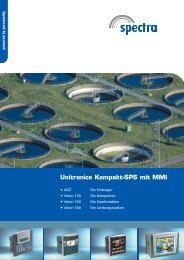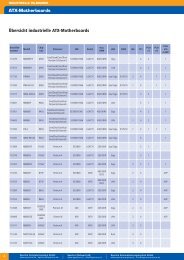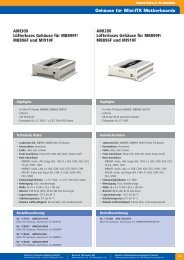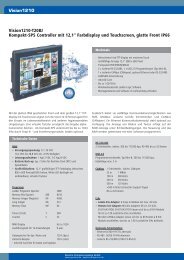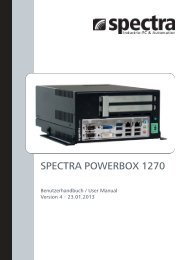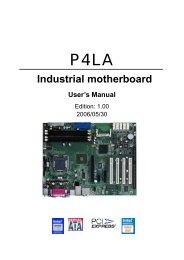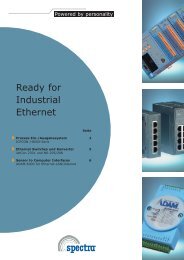JetNet Series Industrial L2 / L3 Rackmount / Rail Ethernet Switch
JetNet Series Industrial L2 / L3 Rackmount / Rail Ethernet Switch
JetNet Series Industrial L2 / L3 Rackmount / Rail Ethernet Switch
Create successful ePaper yourself
Turn your PDF publications into a flip-book with our unique Google optimized e-Paper software.
Maximum 12+2G Rings Aggregation Capability<br />
Korenix <strong>JetNet</strong> 5828G supports MultiRing which allows<br />
aggregating multiple Rapid Super Rings. With the<br />
MultiRing technology all the Fast <strong>Ethernet</strong> and Gigabit<br />
<strong>Ethernet</strong> ports can be part of the ring ports.<br />
Besides, up to 12 100M Rings can be formed and 2<br />
Gigabit Rings can be aggregated to single access switch.<br />
Moreover, after the rings are formed, the device can work<br />
as a layer 2 switch and allow all rings to communicate<br />
within the same VLAN. The <strong>JetNet</strong> 5828G can also work<br />
in a layer 3 mode, where it acts as the default gateway<br />
of the lower IP subnets and VLANs groups of each rings.<br />
These IP subnets and VLAN groups can inter-route<br />
within the single <strong>JetNet</strong> 5828G. With the layer 3 protocol<br />
supported, the technicians can easily plan the IP network<br />
infrastructure for the field stations, security filtering and<br />
wire-speed routing.<br />
Copper<br />
100M<br />
Ring<br />
<strong>JetNet</strong> 4510<br />
Giga<br />
Ring<br />
Copper or Fiber<br />
<strong>JetNet</strong> 5010G<br />
Giga<br />
Ring<br />
Up to 12 x 100M Rings + 2 Gigabit Rings<br />
Different VLAN/IP subnets Inter Routing<br />
Routing Protocol<br />
Routing is the process of moving packets through<br />
an internetwork, such as the Internet. To Route<br />
traffic, a router or layer 3 switch needs to know<br />
the destination IP address, sources IP it can learn<br />
from, the possible routes, finding the best route,<br />
maintaining and verifying routing information.<br />
If the next hop address is known or assigned by IT<br />
manager or service provider, the static route can<br />
direct the correct routing request to the connected<br />
interface. If not, the dynamic routing protocol is needed.<br />
The dynamic routing protocol includes unicast routing<br />
and multicast routing protocols. The unicast routing<br />
protocol includes hop based or distance vector based.<br />
RIP is the typical hop based, the less hops path is always<br />
the best route. OSPF is the typical distance vector base,<br />
the lowest cost is the best route path.<br />
To route multicast services, like the movie, video,<br />
industrial automation streams. The multicast routing and<br />
related protocols are needed. The DVMRP, PIM-DM,<br />
PIM-SM are supported by <strong>JetNet</strong> 5828G series.<br />
<strong>JetNet</strong> 5828G<br />
<strong>JetNet</strong> 5828G<br />
Static Route<br />
Dynamic IP Unicast Routing<br />
Dynamic IP Multicast Routing<br />
175 www.korenix.com<br />
A Beijer Electronics Group Company


